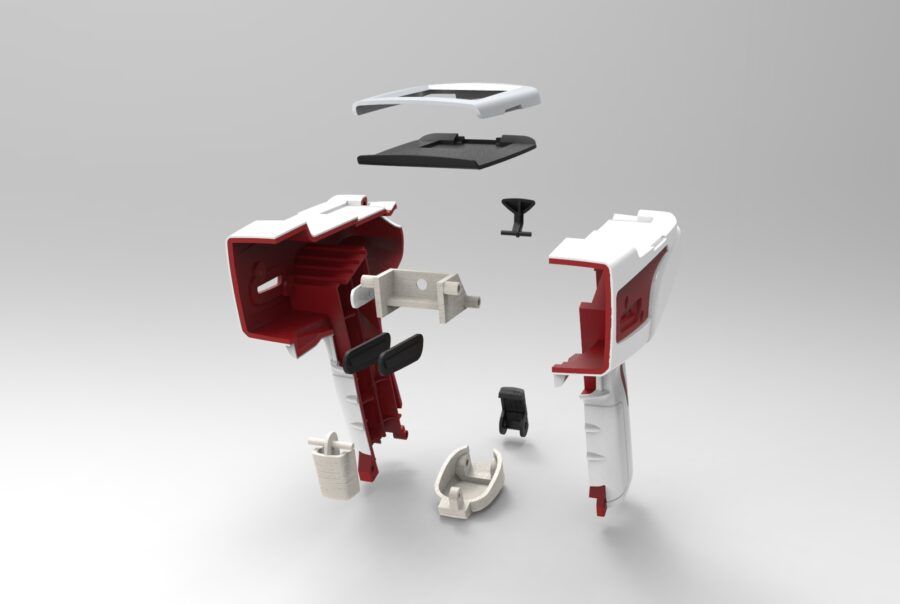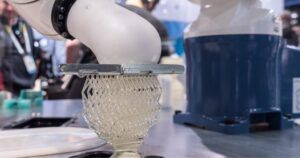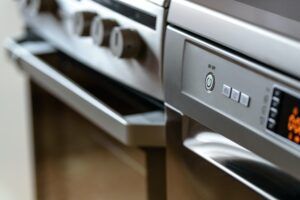There is a wide variety of plastics that can be used for injection molding. These materials possess specific properties, such as pressure, melt temperature, hardness, etc. Even each of these types of plastic for injection molding have different grades.
We want to help you choose the ideal material for your project, whether you need it to manufacture medical parts, automotive components or any other application. For that purpose we have created this article where we will show you some of the most commonly used types.
Plastics for injection molding
Acrylic (PMMA)
Acrylic is a thermoplastic of great strength and excellent optical clarity, so it is widely used as a substitute for glass. It offers great resistance to weather and ultraviolet rays, making it useful for parts that are exposed to the elements.
Compared to other types of plastic, acrylic is resistant to water exposure. It does not absorb odors, is not resistant to solvents and can stain easily if it comes in contact with fats and oils. It is important to note that although acrylic has good tensile strength, it can crack under heavy loads.
The grade of acrylic will depend on the application for which it is needed. Among the most important are the manufacture of solar panels, windows, greenhouses and bathroom enclosures. Transparent architectural parts, lighting and exterior parts can also be made.
Acrylonitrile Butadiene Styrene(ABS)
It has a low melting point, making it easier to mold. It is an opaque polymer to which colorants can be added, has a high hardness and gives a glossy finish to injection molded parts.
Although it is very resistant to impact, it is not when it comes to sunlight and water, so it is not the best alternative for parts that will be outdoors.
Polyamide (PA)
This plastic has important characteristics, such as high hardness, resistance to high temperatures, fatigue and abrasion, as well as noise damping properties.
It is prone to wear out in sunlight, but a UV stabilizer can be added to make it perform much better outdoors. Unlike other plastics, this material does not have much resistance to strong acids and bases. It is less strong than polycarbonate and its impact resistance is low.
It is generally used to make mechanical parts such as bearings, bushings, gears and slides, medical implants, electrical connectors, etc. Because it has a low coefficient of friction, injection-molded nylon is generally used to make mechanical parts such as bearings, bushings, gears and slides, medical implants, electrical connectors, etc. nylon is generally used for high wear and friction applications.
Polycarbonate (PC)
It has great hardness, lightness and transparency. It has good optical properties, due to which it is excellent at withstanding light transmission, retaining its color and maintaining its strength when pigment is added. It is prone to scratches, but is much stronger than glass and is very durable.
Polycarbonate is often chosen over acrylic for injection molding because it retains its physical properties over a wider temperature range. Although, this plastic requires high temperatures to be molded, causing the cost to increase.
Among its most outstanding applications are the manufacture of machine guards, transparent windows, diffusers and light tubes for LED diodes, among others. As it contains BPA, it is contraindicated for the manufacture of food packaging. food containers.
Polyethylene (PE)
This plastic can be chosen depending on its density. There is the HDPE (high density) and the low density (LDPE) which have good chemical resistance, although they are different if we talk about other properties such as hardness, melting point, transparency and flexibility.
PET can be as transparent as glass and is highly resistant to moisture and chemicals. The uses for this plastic are limited to making parts for interiors, as it has no UV resistance.
Polyoxymethylene (POM)
It has good stiffness and a low coefficient of friction. It has low water absorption and is resistant to chemicals. It is a naturally opaque and white material. It is used to make bearings, gears, belts and conveyor pulleys. It can also be used to make eyeglass frames, parts for knives, etc. Its applications are limited to parts that are not exposed to sunlight due to its low resistance to UV radiation.
Polypropylene (PP)
It offers good chemical resistance and is capable of retaining its shape after being subjected to torsion or bending. It has a high melting point, is water resistant and in many cases can be recycled. However, it is not resistant to ultraviolet light and is highly flammable.
Among its most prominent applications is the manufacture of toys, sporting goods, packaging, household appliances, power tool bodies, etc.
Polystyrene (PS)
Polystyrene is fairly lightweight, resistant to moisture, bacterial growth and is relatively low cost. It has good resistance to chemicals, dilute bases, acids and also to gamma radiation used to sterilize medical devices. It is used for optical, medical and electronic applications.
Thermoplastic elastomer (TPE)
It is a mixture of rubber and plastic. This thermoplastic can be stretched and regain its shape, as long as the stretching is moderate. At very high temperatures it may lose its elasticity and its cost is higher compared to other injection molding plastics. Generally, it is used to make medical devices, footwear, car parts, etc.
As you can see, there are different types of plastic for injection molding, so it is important that at the time of undertaking a project you consult with an expert in the field that will recommend the most appropriate depending on your needs. At IDELT we take care of your projects from the beginning, so you can be sure that we will choose the right material for you.







